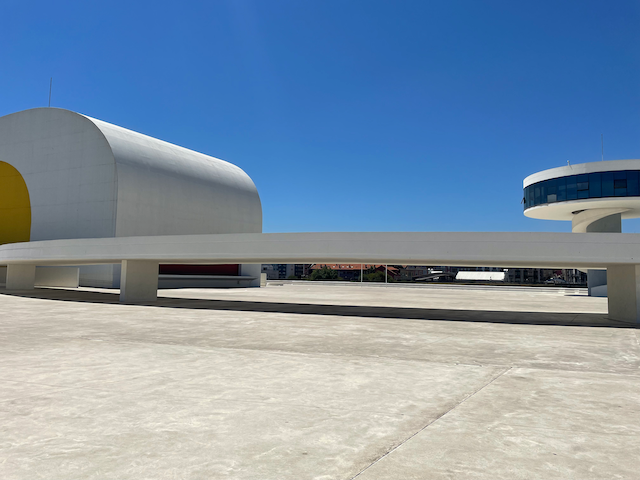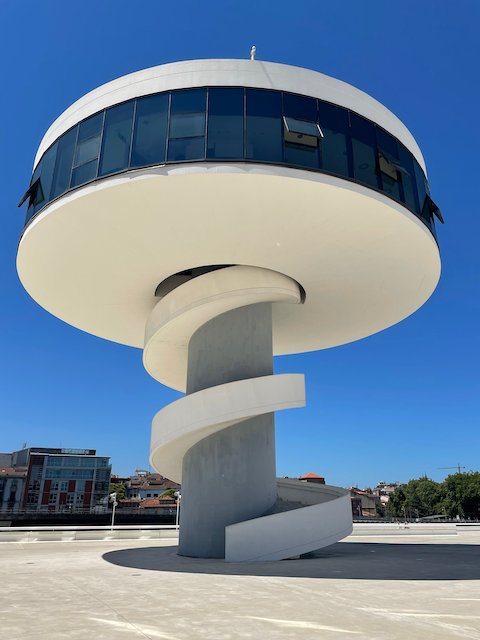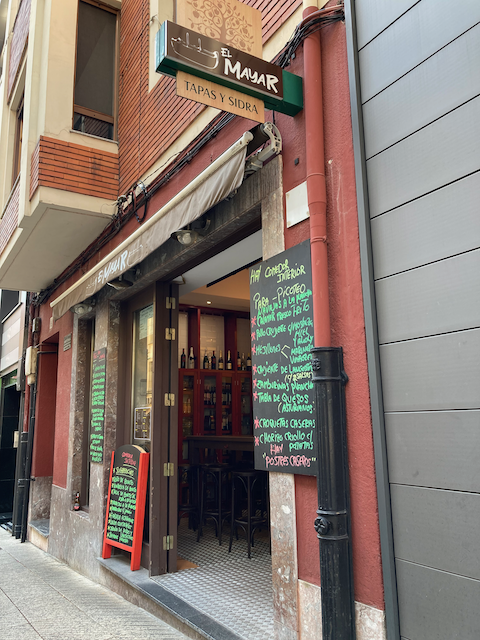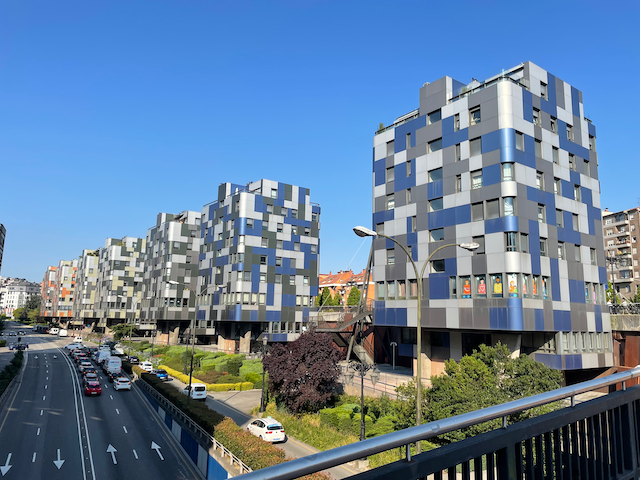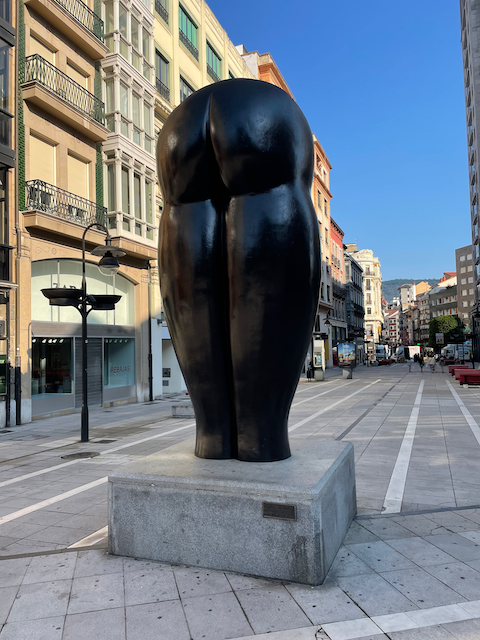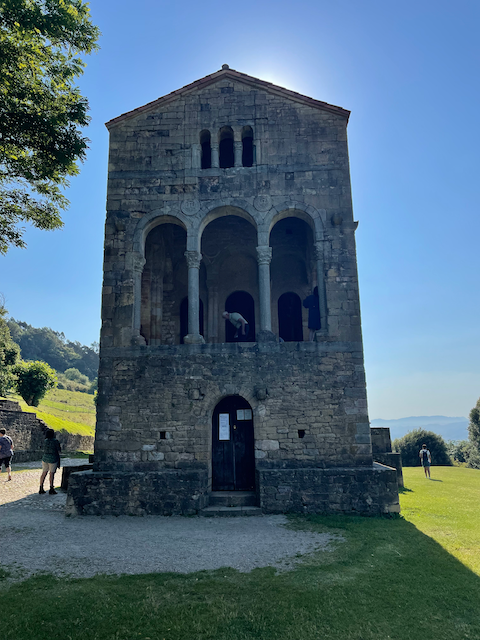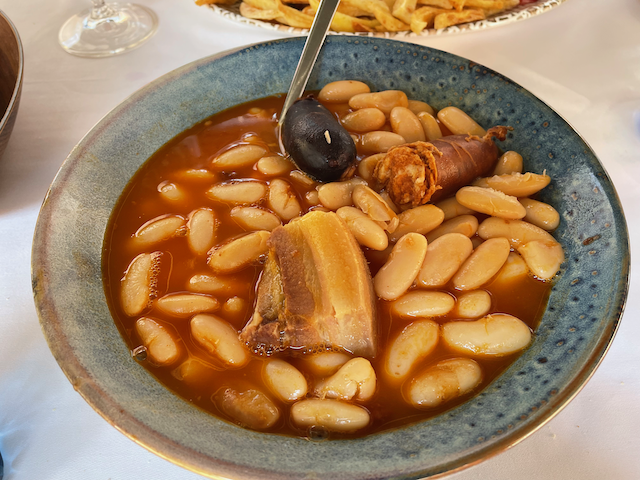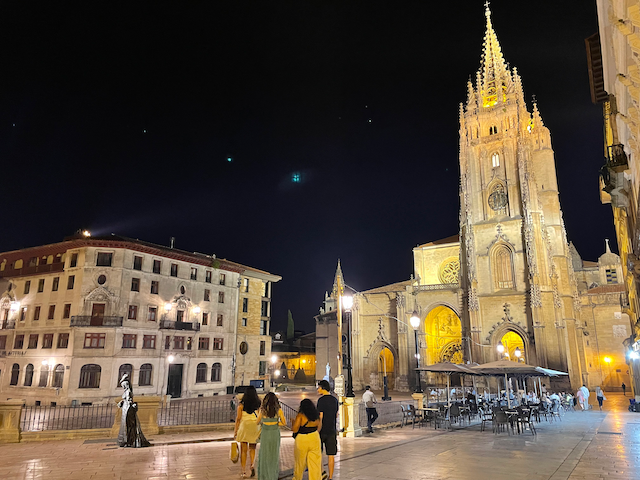192 NM, 1 hrs 29 min.
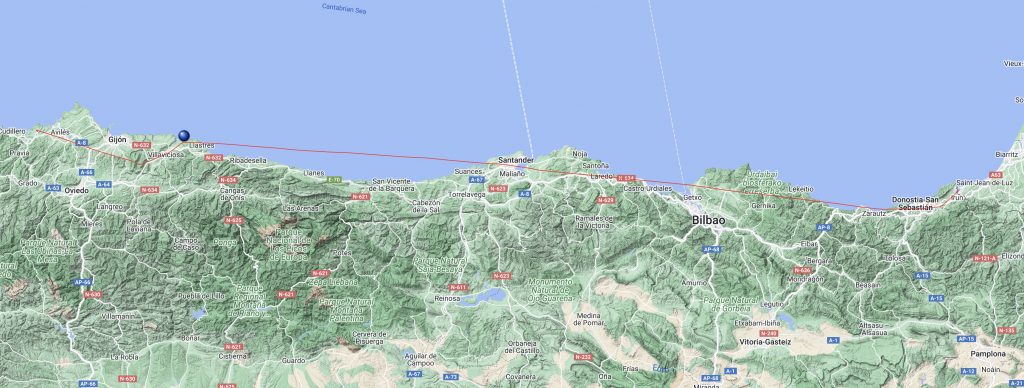
After three days in San Sebastian we left for the Aeropuerto de Asturias, which is the international airport for Oviedo, the capital of the region of Asturias for a five nights stay. Again I filed an IFR-flightplan, which included several altitude assignments due to airway restrictions. At the time we were leaving, there was some commercial traffic with airliners arriving and departing and the tower tried to put us in between an arriving and a departing traffic. Unfortunately, I did not complete my run-up check before taxi and asked for run-up at the holding point. That was definitely not compatible with the plans of the controller and I had to taxi back to the apron and was requested to call back once ready for departure.
Soon after takeoff we received a direct to the Bilbao VOR, which allowed us to fly directly over San Sebastian during initial climb and take some pictures.

When asked for the final level I chose FL70 as the wind conditions were better on that day and, more importantly, for sightseeing reasons, I wanted to stay at a lower level. That was not a problem at all but brought me to my first experience of flying IFR in uncontrolled airspace in Spain.

Actually after the Santander TMA, the lowest possible airway altitude would have been something like FL100 or above. I was asked wether I would like to climb and stay controlled or whether I would prefer to continue at the current level into uncontrolled airspace. I decided to stay at our current level. The procedure was fairly simple: I was asked whether I had ground visibility. Once affirmed I was released from the frequency (remember I was leaving the Santander TMA) and asked to contact Madrid information for radio contact. That was it – really simple.
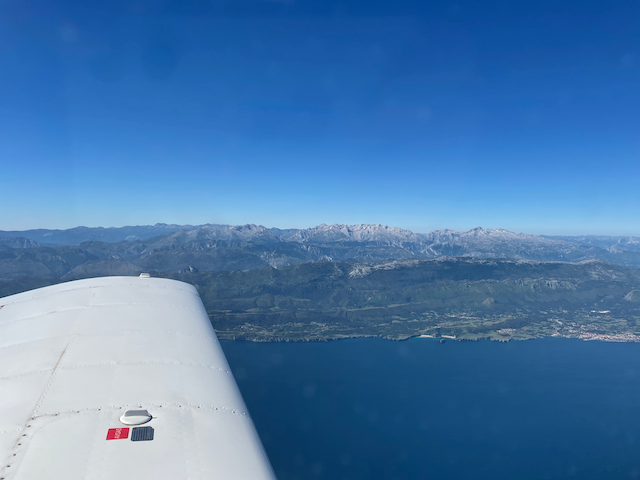
The second situation that kind of stressed me (better: sharpened my senses) happened when approaching the Asturias TMA. Actually my next waypoint was AMAKA, which is both, located on the boundary of the TMA (so controlled airspace again afterwards) and the starting point of the AMAKA* arrivals. Common practice for me is to enter approaches into the GTN750 as soon as possible in order to reduce load during the actual approach. As Asturias (like San Sebastian) doesn’t provide ATIS information, I imagined from the the TAF and METAR in my flight briefing, that runway 11 would be active.
TAF LEAS 100200Z 1003/1103 14007KT CAVOK
TX27/1013Z TN16/1004Z
BECMG 1009/1011 08014KT
PROB30 TEMPO 1013/1015 07015G25KT=
LEAS doesn’t have any meaningful IFR approach for RWY11 (only VOR and NDB), so I prepared mentally and on my navigator for ILS Z RWY29 with circling.
The first surprise came when I was cleared for the AMAKA2C arrival. No problem, I entered the arrival into my navigator as the approach was already entered. What I didn’t notice was that the transition for the approach was wrong so the sequencing in the GTN was completely messed up. Also the sequencing for the arrival is not activated automatically ( I noticed that when looking at the flight plan in the navigator) and it looked AMAKA(next waypoint) -LEAS (from the original FLP) – AMAKA (starting point of the arrival). This was making me a bit nervous as I also had to interpret the altitude restrictions for the arrival and the approach. Unfortunately, shortly before approaching AMAKA, instead of entering a direct-to AMAKA (after LEAS) in the flight plan, I activated the leg LEAS-AMAKA, which was giving me a completely wrong course information. It took some time (and sweat) to get everything together in the right way but finally we went for a nice and safe approach.
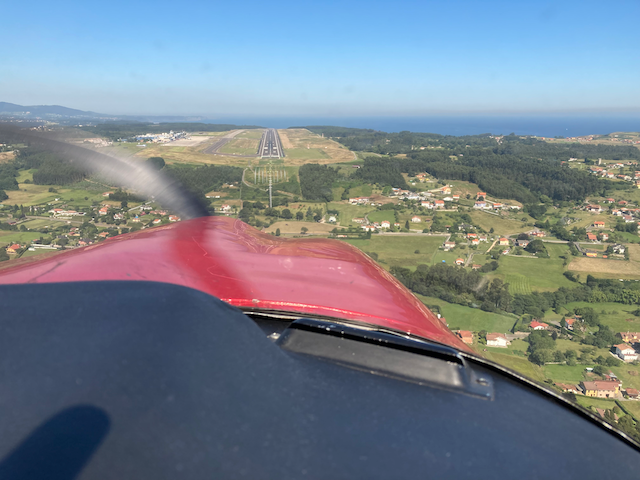
Airport Asturias – LEAS:
Somewhat bigger regional airport with commercial traffic in the boundary hours. All processes are very simple and for light GA handling is not required. Prices are fair (Landing € 19, Parking ~ € 100 for five nights). Avgas is a available by truck, which arrived instantly after landing but payment by credit card, although possible, was a bit challenging, especially if you are not able to provide a VAT number. A good infrastructure (e.g. rental cars at the airport) makes this a very good recommendation for discovering Asturias.
Oviedo city and Asturias:
Below are some impressions for Asturias and Oviedo. We stayed at Oviedo, which is an half hour car drive from the Asturias airport, located close to the city of Avilés. A must see for Avilés is the Centro Niemeyer, which was designed by Brazilian architect Oscar Niemeyer. I believe that the expectation was that it would attract tourists to Asturias as the Guggenheim did for Bilbao and the Basque. This, in fact didn’t materialize and 6 months after its inauguration, the center was closed. It re-opened not long afterwards, mainly for exhibitions, but it never gained the fame of its „competitor“ in Bilbao. However, the architecture is far more impressing than anything else I have seen in the past.
Oviedo is a lively medieval city with many restaurants and bars. Asturias in general and Oviedo in special are famous for their cider with a very special procedure to fill the glass. We have tried it once and then switched back to wine and beer, which we did enjoy. TheJunt other regional (nourishment) peculiarities of Asturias are the Fabada asturiana, a bean stew, and the Cachopo, very similar to a Cordon Bleu.
